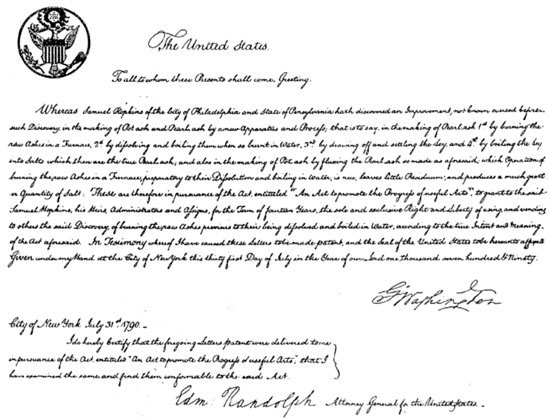2.2 THE FOUNTAINHEAD: THE CONSTITUTION AND THE U.S. PATENT SYSTEM
It all starts with the Constitution of the United States, one of the greatest documents in human history. In it, the Founding Fathers included three lines that became the foundation of U.S. patent law and helped to transform a newly formed, poor, agricultural country into the richest industrialized nation in the world. Clause 8 of Section 8 of Article 1 of the U.S. Constitution states:
Congress shall have Power … To promote the Progress of Science and useful Arts, by securing for limited Times to … Inventors the exclusive Right to their … Discoveries.
The Patent Act interprets the word “discovery” to mean what we now consider to be “invention.”
Thus, patents are the product of laws passed by Congress, and the overriding purpose of patents is to “promote the Progress of Science and useful Arts” and reward the inventor for this accomplishment. The public good takes precedence over the reward. In fact, the Patent Act's only stated purpose is to further science and the useful arts for the public good. This fundamental principle, which is the basis of the patent system, has not changed since the Constitution was ratified in 1790 and set the stage the modern patent.
Figure 2.1 The first U.S. patent.

The first, relatively brief (only seven sections) U.S. patent law, titled “Act to Promote Progress of the Useful Arts,” ...
Get How to Invent and Protect Your Invention: A Guide to Patents for Scientists and Engineers now with the O’Reilly learning platform.
O’Reilly members experience books, live events, courses curated by job role, and more from O’Reilly and nearly 200 top publishers.

